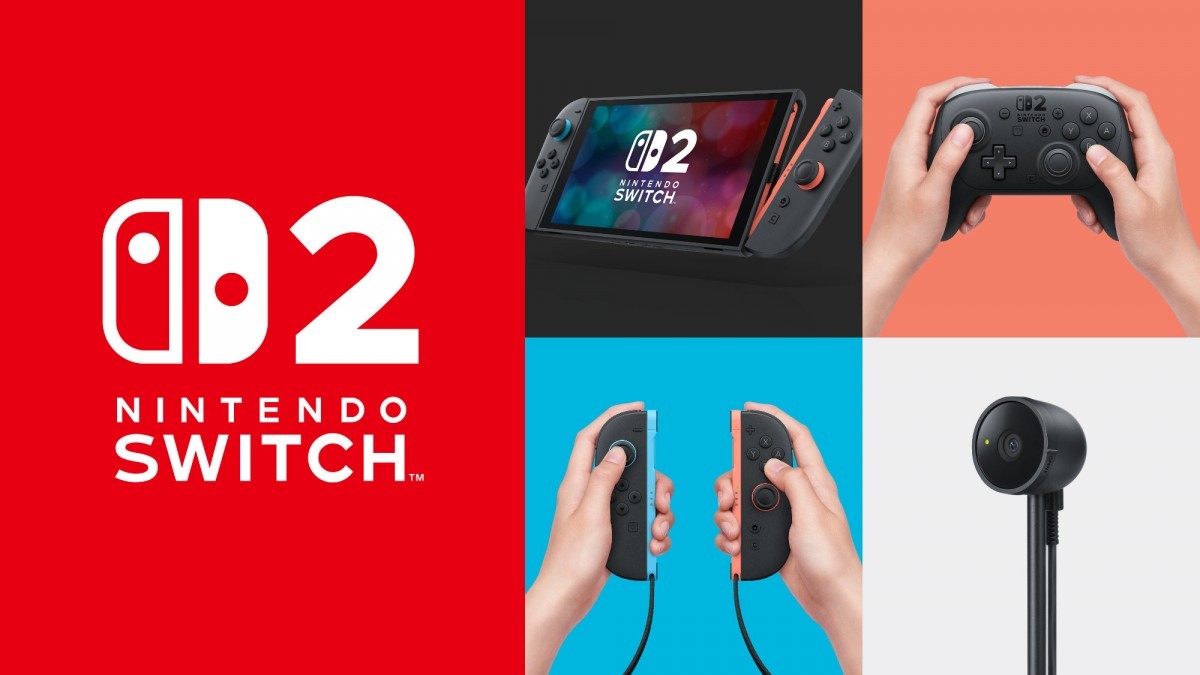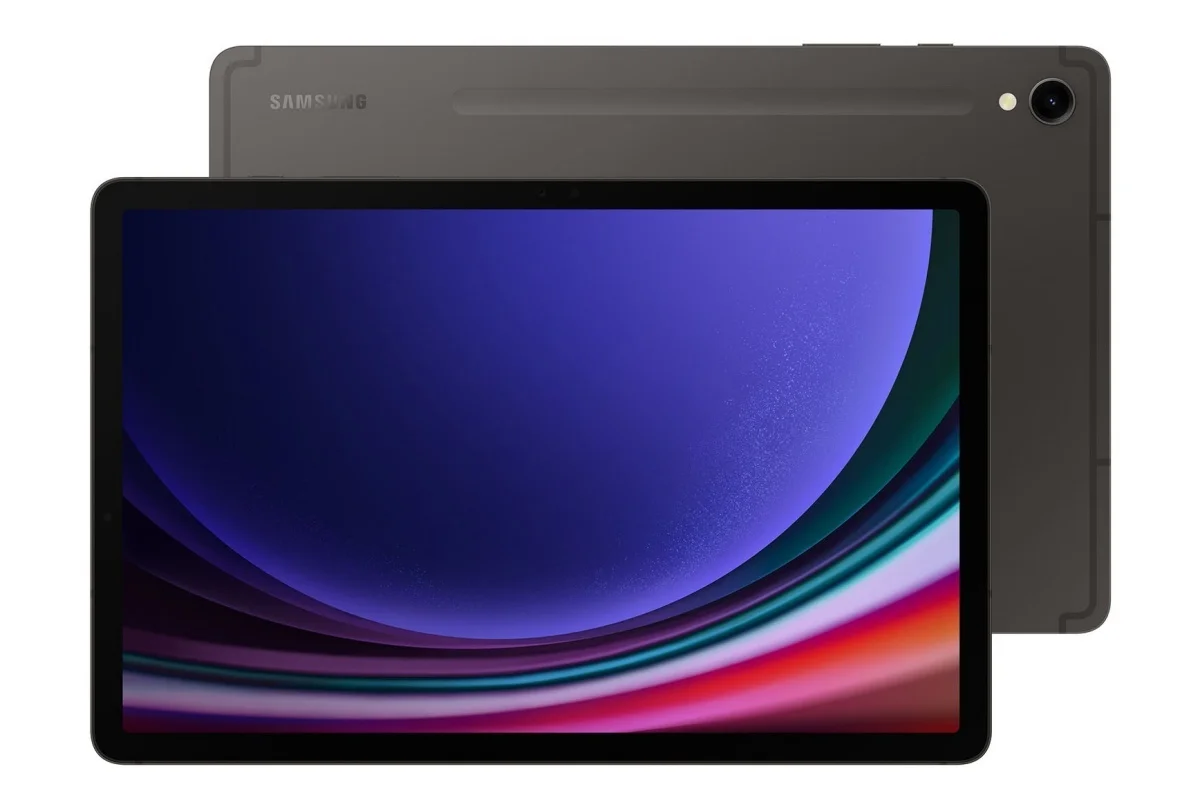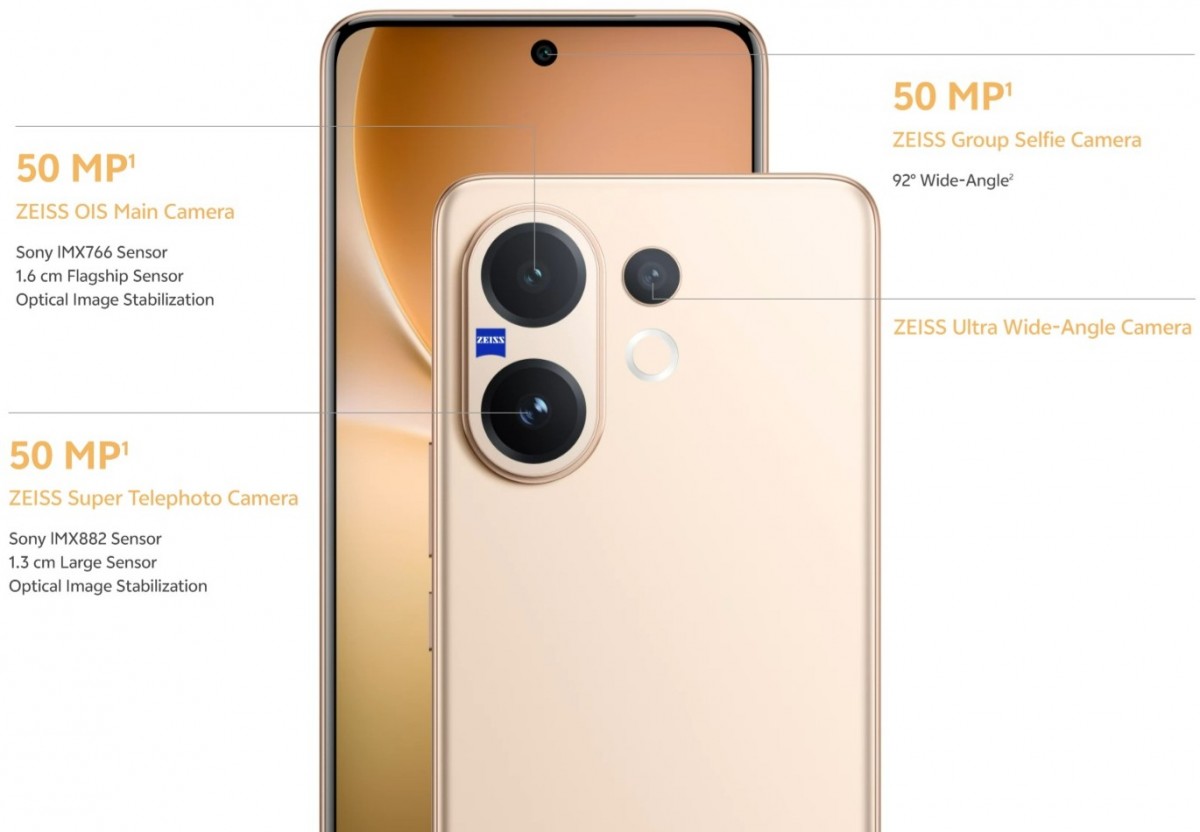A great phone should excel in communication, offer an impressive camera, provide an enjoyable gaming experience, and more. It should have a long-lasting battery that charges quickly, ensuring no delays. Durability is also crucial, capable of withstanding drops and even a quick dunk in water without any issues.
The year 2023 has witnessed an impressive range of foldable phones, with captivating offerings from both established and emerging companies. Alongside these, we have also seen notable updates from well-known brands. For instance, there is the titanium iPhone 15 Pro Max, and the Samsung Galaxy S23 Ultra, which pushes boundaries by aiming for the moon.
Here are nine of this year's hottest smartphones
1. iPhone 15 The best phone for most people
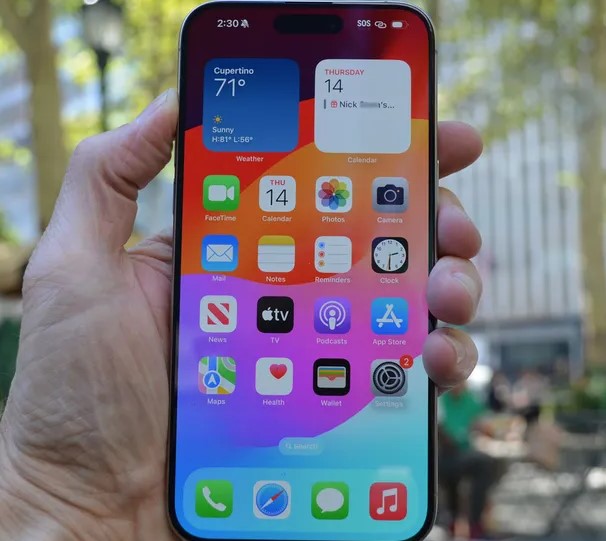
Apple's newly released iPhone 15 marks the most significant step up for a base iPhone in several years, earning its place as the best value phone money can buy in 2023.
Design: The iPhone 15 does what the iPhone 14 did not: it moves the base model forward with a refreshed chassis design, a brand-new (and eye-catching) rear glass panel, and a compatibility-improving USB-C port.
Display: The iPhone 15's 6.1-inch Super XDR OLED display is bright and responsive, however, as on the iPhone 14, its refresh rate is locked to 60Hz. You do get Apple's Dynamic Island this time around, though.
Camera: There are still just two lenses on the back of the iPhone 15, but one of them is vastly improved over the iPhone 14. The 12MP ultrawide is basically the same, but the main camera is now the same 48MP lens that you'll find on the excellent iPhone 14 Pro (and indeed the iPhone 15 Pro).
Performance: The iPhone 15 uses the iPhone 14 Pro's superfast A16 Bionic chipset, which should provide more than enough power for most iPhone owners (for context, the latter was the most powerful handset of 2022).
Battery life: The iPhone 15 is rated for 20 hours of video playback, 80 hours of audio-only, and a 50% recharge in 30 minutes with the optional 20W charger. In our testing, we were able to use the phone casually for a full day.
Value for money: In recent years, Apple's standard models have felt like minor upgrades that pale in comparison to their respective Pro-level counterparts, but the iPhone 15 bucks that trend by being a genuinely great value product.
2. Samsung Galaxy S23 Ultra The best overall phone

The differences between the Samsung Galaxy S23 Ultra and its predecessor, the Galaxy S22 Ultra, may seem less than skin deep, but the 2023 phone improves upon Samsung's last-gen flagship in many ways. It gets a faster chipset, tougher materials all around, and a new camera sensor that packs more megapixels than we ever imagined on a phone.
Design: The Galaxy S23 Ultra has a smooth plane of glass on the front and back, with a gently curved display leading to the frame. It isn't quite as seamless as last year's S22 Ultra, but it is still gorgeous. The new, more natural color tones are also especially delightful in person, and even better than in product photos.
Display: You won't find a much better display than the big, bright, AMOLED screen on the Galaxy S23 Ultra. It isn't quite the brightest, and it lacks Dolby Vision support, but it's still smooth, with a fast 120Hz refresh that looks fantastic watching movies or playing games.
Camera: The Galaxy S23 Ultra is like carrying an entire camera bag full of lenses. Its versatility makes it the best camera phone money can buy. There are plenty of lenses, great shooting modes, and now even an expert-level app, making this the best phone for serious photography.
Performance: With a bespoke, overclocked Snapdragon 8 Gen 2 chipset that's faster than the Snapdragon in competitor phones, the Galaxy S23 Ultra is the Android benchmark champ. It also performs just as well in real life, playing high-resolution games or shooting video in 8K.
Battery life: Sure, we can always ask for more battery (maybe instead of the pen next time?), but the Galaxy S23 Ultra lasted incredibly long in our review tests, longer than most devices we've tested recently. It keeps the same 5,000 mAh battery as its predecessor (and most flagships today), but manages power well.
Value for money: Just skip this section and go back to the top so you can read about all of the amazing hardware and features that you get for a whole lot of money. Yes, the Galaxy S23 Ultra is a four-figure phone in every region, though Samsung phones are famous for trade-in and carrier-related deals.
3. iPhone 15 Pro Max The best iPhone

The iPhone 15 Pro Max is indisputably the best iPhone money can buy in 2023, so for Apple fans with a bottomless supply of cash, this is the top choice. The smaller iPhone 15 Pro is also an exceptional handset that's worth considering if you prefer its more practical 6.1-inch size, but since the larger iPhone 15 Pro Max offers a 5x periscope zoom lens, the latter phone is the objectively superior device.
Design: As with its smaller sibling, the iPhone 15 Pro boasts a gorgeous titanium design that can withstand unwelcome drops more effectively than its predecessor. The addition of a USB-C port and configurable Action button makes this a more versatile device, too.
Display: The iPhone 15 Pro Max packs an excellent 6.7-inch Super XDR OLED screen (with ProMotion), which is unchanged from the iPhone 14 Pro Max.
Camera: In addition to that aforementioned 5x periscope zoom lens – which marks the first of its kind on an iPhone – the iPhone 15 Pro Max boasts a 48MP quad-pixel main lens and a 12MP ultra-wide lens, making it the most capable and versatile iPhone yet for mobile photographers.
Performance: Apple's all-new A17 Pro chipset delivers mobile gaming performance that's comparable to some high-end PCs (yes, really). Along with the iPhone 15 Pro, the iPhone 15 Pro Max is the most powerful phone on the market.
Battery life: The iPhone 15 Pro Max managed 28 hours of mixed-use in our testing, with the phone recharging to 50% in just over 30 minutes. That's pretty good going for a phone of this size and power, but others charge faster.
Value for money: As with the Samsung Galaxy S23 Ultra, the iPhone 15 Pro Max is an exceptionally expensive handset that can never truly be considered good value for money. That said, you're still getting a whole lot of phone for the price.
4. Google Pixel 8 Pro The best Pixel phone
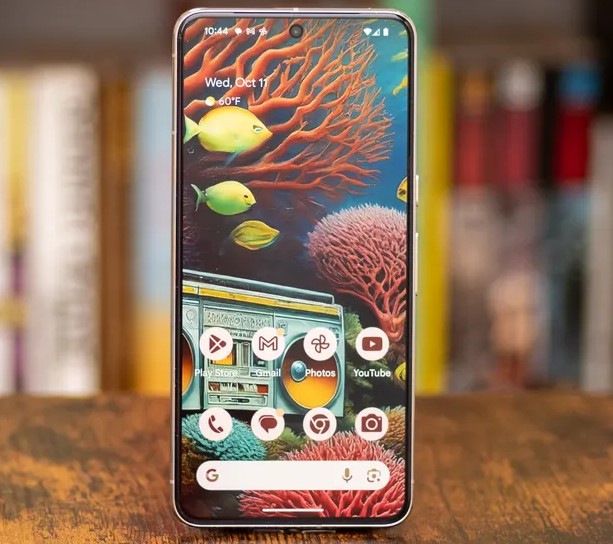
The Pixel 8 Pro is Google's most ambitious Pixel yet, with some serious camera upgrades that will satisfy even pro photogs, and a Tensor G3 chipset custom built to run Google's machine learning features. Google is so confident in this phone's performance that it is promising an unprecedented seven years of major updates, longer than any other phone maker supports its phones, currently.
Design: The Pixel 8 Pro is more rounded on the corners, and more flat on the display. This makes the phone easier to hold, while also giving you a better view of your content. The finish is lovely, and the colors are more classy and inviting than unusual and modern. This is the nicest Pixel phone Google has made so far, which is good because it has largely made the same phone three times now.
Display: The Pixel 8 Pro display is a standout feature this year, and Google has even endowed it with its own branding: Super Actua. The Pixel 8 Pro can reach 2,400 nits at peak brightness, and still pumps out 1,600 nits when you aren't in direct sunlight. In almost every way, the Pixel 8 Pro display beats that of the iPhone 15 Pro Max.
Camera: Compared to the iPhone 15 Pro Max, some photos looked better when shot with the Pixel 8 Pro, but others, especially night pics and low-light images, looked better taken with the iPhone. That's surprising, but there are still some reasons for Google to brag. Only the Pixel 8 Pro has Magic Editor, which combines generative AI with Google's Magic Eraser to fix and change images with a little too much ease.
Performance: In terms of raw performance, pushing games and graphics to new heights, the Pixel 8 Pro does just fine, but it won't win any competitions. It handled all of my favorite games and ran high-resolution videos smoothly, but everything looked better on phones like the iPhone 15 Pro or even older Android phones like the Galaxy S23 Ultra.
Battery life: The Pixel 8 Pro had no trouble lasting through a full day of use. That should come as no surprise, since it has a larger battery than either the Samsung Galaxy S23 Plus or the Apple iPhone 15 Pro Max. Google really packed in the biggest cell it could fit, and you'll need to buy a gaming phone to find bigger.
Value for money: Google can be liberal with discounts, especially around the sales season. More than with any other brand, I recommend waiting for a deal when you're considering a Pixel phone, because as good as the phone is now, it feels like an even better buy for a few hundred dollars or pounds less.
5. Google Pixel 7 The best budget phone
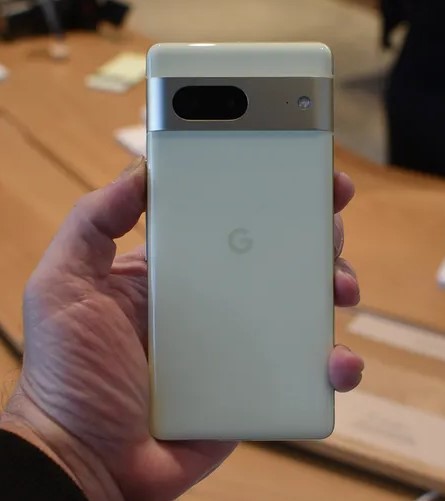
While you might expect the Pixel 7a would be our budget phone pick, Google has given the Pixel 7 such good discounts throughout the past year that it is worth paying more, though you may not have to. Even though the Pixel 6a is still on sale at a great low price, for better durability, wireless charging, and much better photography, the Pixel 7 is worth spending just a bit more to buy.
Design: The Pixel 7 looks like the Pixel 6 and the Pixel 8, but there are different color options every year, and we like the lemongrass hue offered for this phone. The camera bar is metal and tinted depending on the color you buy, and it has a great look for a budget device. Plus, it is rated IP68 for water resistance, which is a huge improvement over the previous model.
Display: The Pixel 7 has a Full HD+ resolution and 20:9 aspect ratio, and it runs at up to 1000 nits in normal use, and can push to 1400 nits at its peak (25% brighter than that of the Pixel 6's display) for better visibility in bright surroundings.
Camera: With the Pixel 7 you're getting the same 50MP main camera as the Pixel 7 Pro, as well as a similar 12MP ultra-wide. You also get the same 10.8MP punch-hole selfie snapper, plus 4K video recording up to 60fps and support for 10-bit HDR video capture for better colors, brightness and contrast. While the hardware is interesting, the Pixel camera experience is really more about the processing and software, which here are supported by that Tensor G2 chip.
Performance: The Pixel 7 doesn't have the raw power to match phones powered by Qualcomm's Snapdragon 8 Plus Gen 1 chip, such as the Samsung Galaxy S22 Ultra. However, the difference isn't likely to be all that significant in real-world use. All in all, while it may not have the raw horsepower of an iPhone or newer Galaxy, the Pixel 7 can hold its own, especially where AI tasks are concerned.
Battery life: The 4,355mAh battery in the Google Pixel 7 may sound large, but we wish it was bigger, especially as it's technically a capacity reduction compared to the 4,614mAh battery inside its predecessor. We had no trouble getting the phone to last all day, and ended most days at around 15%, with usage including streaming, gaming, and extended TikTok sessions.
Value for money: Don't buy this phone for the full suggested retail price. Google and Amazon both offer deals on this phone often, and you can buy it for less than $449 / £449 / AU$749 often. Amazon sold this phone for that price more than two months of the last year. Get the best deal on the best budget with a little patience.
6. Apple iPhone 13 The best budget phone
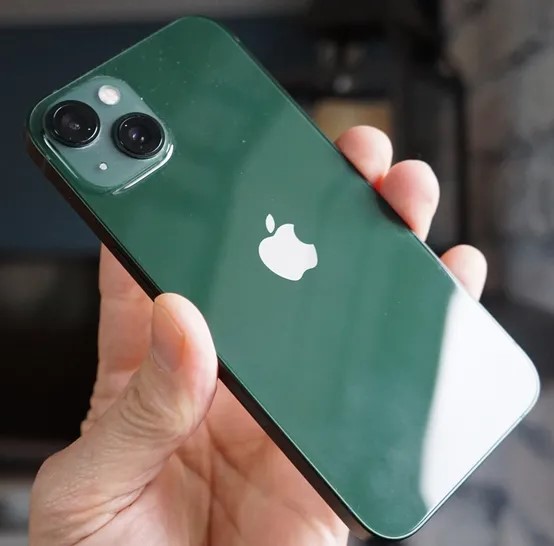
The highlight of the iPhone 13 is its battery life. Previously, iPhones haven't been synonymous with strong battery life, but during every day of our testing we've been hard-pressed to run the iPhone 13 out of juice. Apple has finally cracked it when it comes to battery life, and it's now far better than it has been on previous iPhone iterations. The iPhone 13's new A15 Bionic chipset, meanwhile, is incredibly powerful, and paired with 4GB of RAM it's capable of running multiple apps and tasks quickly and efficiently.
Design: The iPhone 13 features a flat-edge design, which debuted with the iPhone 12 range. That means the design is a touch more angular than the rounded finish of previous iterations, but the phone is still comfortable to use one-handed. On the subject of durability, the iPhone 13 series is IP68 dust and water resistant, which means it can survive in up to six meters of water for a period of 30 minutes. Don't expect this handset to be fully waterproof, but it'll survive the odd dunk.
Display: The display on the iPhone 13 is 6.1 inches, with a resolution of 2532 x 1170. It's a Super Retina XDR OLED display made by Apple, and it makes for a clear and bright image – the brightness has been improved on the iPhone 13, and it can hold its own against other smartphones in direct sunlight.
Camera: You've got two cameras on the rear: a 12MP wide camera with an aperture of f/1.6, and a 12MP ultrawide camera with a f/2.4 aperture and a 120-degree field of view. There's no telephoto shooter here – you're reliant on digital zoom, so this phone isn't going to be the best for grabbing long-distance shots.
Performance: Apple has made another big step up here, but it's most noticeable in benchmarking results. The everyday experience is largely the same, but it'll be a marked step up from much older iPhone models. The A15 Bionic chipset is teamed with 4GB of RAM, and that's enough to keep it running at full tilt.
Battery life: During our testing time, the iPhone 13 made it through every day with enough charge in the tank to keep going for at least another couple of hours. This isn't the best battery life you'll find in a smartphone – many Android alternatives will be able to last longer – but this is a big step up for Apple from previous iPhone models, and it'll make the iPhone a more compelling option for many potential buyers.
Value for money: The iPhone 13 is the cheapest iPhone model you can buy that doesn't have the old Home button, and it's still quite a powerful and capable phone, with some of the best power management ever in an iPhone. It isn't cheap, and you can find Android phones cheaper, but Apple treats every iPhone like the best iPhone, giving them all the same great software update features.
7. OnePlus 11 The best camera phone

The OnePlus 11 returns to the company's roots, delivering premium performance and a few impressive specs while trading other features for a price cut versus the big name competitors. That means the OnePlus 11 is cheaper than the flagships from Samsung and Apple, and OnePlus doesn't confuse its lineup with Pro and Plus versions, either. It's got everything OnePlus does well, and it works great.
Design: The OnePlus 11 is a slim phone, with a glossy finish if you buy the green color. The camera array dominates the back and will stand out among iPhones and Galaxys. Sadly, the phone isn't IP68 rated for water resistance. The phone keeps the popular mute switch to silence the noise in a hurry.
Display: The display on the OnePlus 11 really pops. The AMOLED screen can refresh up to 120Hz, and the smooth rate is noticeable playing fast games with tons of particle effects. It supports both Dolby Vision and HDR10+ for color accuracy. It could be brighter, but it's otherwise fantastic.
Camera: The Hasselblad-branded camera setup on the OnePlus 11 isn't for everyone. We managed to grab some amazing portraits, and landscape photos looked excellent, but photos had a distinct look and feel to them. The camera can't handle versatile shots like distant zoom or macro close-ups.
Performance: The OnePlus 11 was the first phone we tried with the new Snapdragon 8 Gen 2 platform, and though Samsung's Galaxy S23 is a hair faster, the difference isn't noticeable except in benchmark numbers. The OnePlus 11 is snappy and efficient, doing a great job with games and apps alike.
Battery life: Battery life is decent in its own right, but when it comes to charging it's a champion. With the included (!) charger, you can fill the battery in less than 30 minutes. It's even faster outside of the US, where higher voltage rules. There's no wireless charging, though.
Value for money: Like the best OnePlus phones of the past, the OnePlus 11 offers great performance for a solid value. It isn't the cheapest flagship on this list, but for the money you get a huge screen, unique cameras, and other standout features you won't find elsewhere.
8. Motorola Razr Plus (Razr 40 Ultra) The best clamshell foldable
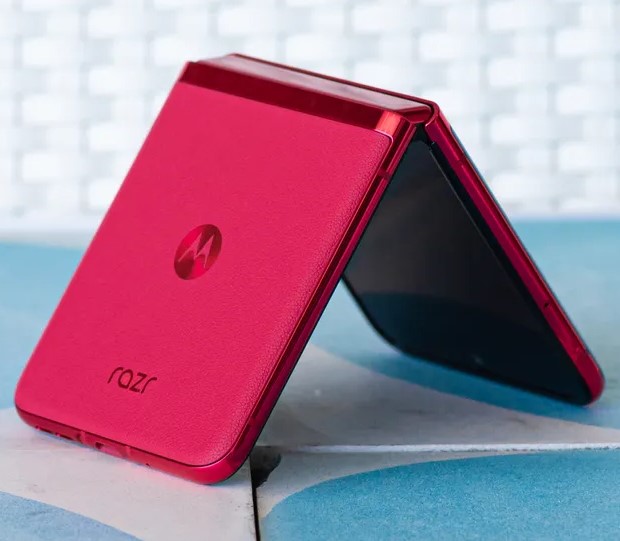
The Motorola Razr Plus (or the Razr 40 Ultra outside the US) is more than just the best foldable phone you can buy (as far as flip phones go); it's an entirely new category of smartphone, offering more than any handset before it. With the phone shut, it's a compact miniature communicator, a pocket mirror, and a palm-sized map. This is the phone that finally justifies folding a display in half, and it makes you wonder when the rest of the best phone makers will catch up.
Design: When folded, the two halves of the phone smack together like pursed lips, with a gentle curve around the edges that still manages to cleave together in a sealed crease. Perhaps it's the Viva Magenta hue that adds to this impression. The Samsung Galaxy Z Flip 4, by comparison, seems boxy and square. The Razr Plus shows no visible gap when closed, unlike every competing flip phone that came before it.
Display: This is the first flip phone that isn't paying lip service to the cover screen. This isn't a screen that's just for checking the weather or simple notifications, and neither is it there to just show cute animations. This is the real deal. You can run full apps on this display. That said, if the Motorola Razr Plus didn't have the great external display it would still be a standout for its big folding internal screen
Camera: All around, this phone has all the hallmarks of a low-quality camera. In photos of flowers, the camera blew out red tones until the details were mostly gone. Taking photos in the woods, stems and leaves in the background were either unnaturally blurry or digitally oversharpened, with deep black lines dividing objects.
Performance: If all you care about are benchmark scores, the Motorola Razr Plus won't be the phone to pick. Thankfully, real-world performance tells a different story than I expected from the specs, and even though this phone uses the same platform as last year (or perhaps because it does), it performs better than the previous Razr, and better than you'd expect.
Battery life: Motorola has done the best it could in fitting a large battery inside the thin folding shell of the Razr Plus. It's even managed to fit a larger battery into the folding frame than you'll find in the iPhone 14 Pro, though Apple manages power slightly better. We couldn't quite make it through a full day on a full charge with the Motorola Razr Plus, though that's probably because the phone was just so much fun to use.
Value for money: The Razr Plus is expensive, but it's the first clamshell foldable phone that we'd recommend to anyone and everyone, not just people asking about flip phones, or folks who want the coolest new thing.
9. OnePlus Open The best tablet foldable phone
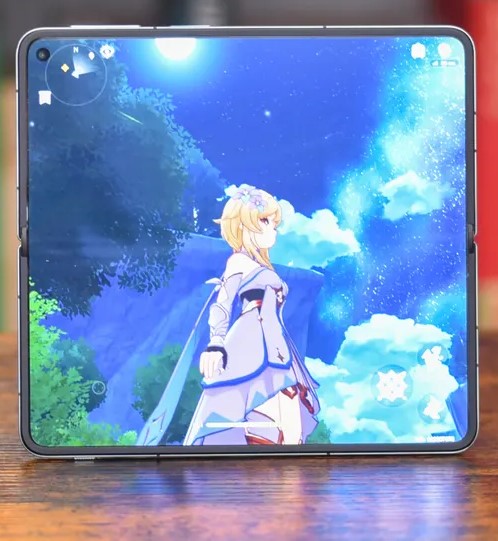
The OnePlus Open is the newest phone on this list, and we consider it to be among the best foldable phones (if not the best foldable phone) money can buy right now. Sure, the Samsung Galaxy Z Fold 5 offers myriad more special features, and the Google Pixel Fold utilizes the power of Android in a way that only Google-made phones can, but in almost every other department, the OnePlus Open is the best there is.
Design: For us, this the first tablet foldable phone that simply feels right. All the ‘Folds' that came before feel wrong. They're shaped funny when closed: the Galaxy is too narrow; the Pixel too squat. The Open, however, hits the design sweet spot, and it's the most important improvement OnePlus could have made to the foldable form factor. If you're paying twice as much for a phone, you shouldn't feel like it's the wrong size half the time.
Display: The two displays on the OnePlus Open are a marvel to behold, and both of them are just as good as the flagship phone or tablet they'll replace in your collection. The cover display is 6.3 inches, with LTPO 3.0 technology that can slow down to 10Hz for a low-power, always-on mode. The inner display is a huge 7.82-inch screen that has almost the same screen area as an iPad Mini (2021). It can slow down to 1Hz, and both screens can refresh up to 120Hz.
Camera: On every other foldable phone, the size limitations of the fold-in-half design have resulted in cameras that range from inferior to downright awful. The OnePlus Open has the best cameras of the bunch, and comes close to being as good as the best flat camera phones, closer than any foldable we've used so far.
Performance: The OnePlus Open uses Qualcomm's Snapdragon 8 Gen 2 chipset, so it's as powerful as other flagship phones using that same processor, like the Samsung Galaxy S23 Ultra. Sure, faster chipsets now exist, but you'll have absolutely no trouble juggling multiple applications on this phone. Mind you, its gaming performance doesn't compare to the best Android phones on the market.
Battery life: The OnePlus Open can last you a full day, if you're judicious with your usage. Normally, a flagship smartphone this size would come with a battery around 5,000mAh, but the OnePlus Open uses two cells that add up to 4,805mAh, so a bit smaller. OnePlus has some innovative ways to add more power, but there's only so much it can do without making the device much larger.
Value for money: At $1,699, this is not a cheap phone, but that price is still some $100 less than the starting price of the Samsung Galaxy Z Fold 5 and Google Pixel Fold. What's more, OnePlus is offering a deal for the full life of the OnePlus Open that gives you at least $200 off if you trade in any phone.

